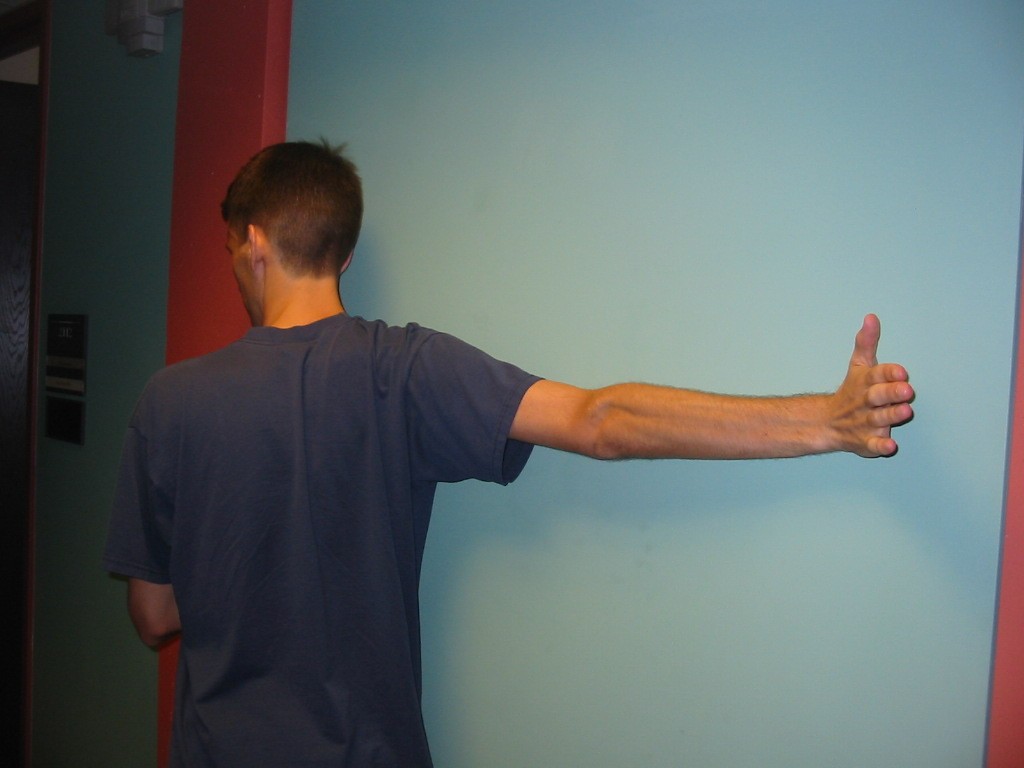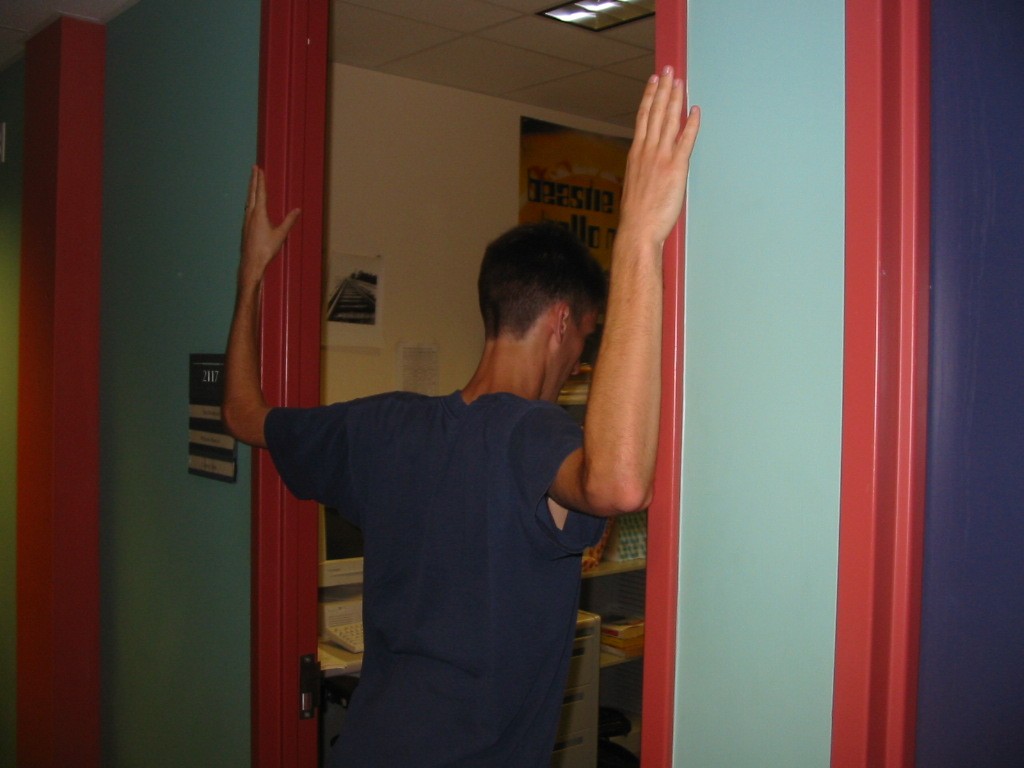Here are some suggestions I found to prevent and/or avoid RSI, maybe something here might help...
Proper technique: typing, mousing, and writing
There are three keys to proper typing technique.
Keep your wrists straight: the straighter your wrists, the less strain you put on the tendons and nerves that run through your wrist. A split keyboard may aid you in keeping your wrists straight.
Let your hands float: This means don't rest your wrists on the desk, keyboard, or a wrist rest when you are typing. Let them hover over the keys. This has three advantages: (i) You allow the big muscles in your back to share some of the work; (ii) It allows you to keep your wrists straight, which is impossible if they're planted on a wrist rest; (iii) It's easier to reach the hard-to-reach keys (next item).
Don't strain your fingers: When you need to press a hard-to-reach key, like CTRL, SHIFT, BACKSPACE, etc., don't stretch out your pinky. Instead, move your whole hand and use your index or middle finger to press the key. Don't use one hand when you need to hit two keys simultaneously, e.g. CTRL-X, SHIFT-Y. Think before you type: unnecessary retyping/editing can add up. Use a light touch when typing: don't pound the keys.
Stretching and strengthening
In this section I offer some specific recommendations for stretching and strengthening exercises that have helped me. These fall under the category of prevention as well as recovery. Most of them you can easily do in your office during breaks, which you should take every hour or so.
Wall stretch: This is my favorite stretch. It is great for stretching out the shoulder, arm, wrist, and hand all at once. Extend the arm along a wall, with arm parallel to the ground and palm facing wall. Attempt to open chest so that shoulders are perpendicular to arm. Extend fingers and palm away from wall as much as possible. Your hand may tingle - this is OK. Hold for 30-60 seconds. Try with the arm at different angles. Repeat on other side.

Doorway: This stretches the pecs and shoulder. Hold elbow at a right angle, and place forearm along door frame, as shown. Lunge forward, keeping chest and pelvis facing squarely forward. Hold 30-60 seconds. Try holding arms at different angles. Repeat on other side.

Back and neck strengthening: The other thing I do that really helps is an exercise that involves one of those big exercise balls, a long dowel rod, and a couple of 3 (or 2) pound dumbbells. You get on your knees, lay your chest on the ball, put the rod on your back so that it makes contact with your rear, back, and head (to keep the spine neutral). The ball should be big enough so that the rod is sloping slightly up. Then just slowly raise the dumbbells off the ground and lower back down. You can have the arms at different angles, but start with them extending behind you, as that is easier. Also try turning your head from side to side occasionally as you go, to activate the neck muscles. You do not need heavy weights for this exercise to be effective, and heavy weights may in fact strain your already fatigued muscles.
Correct breathing: It's amazing how stress and computer use can corrupt our natural way of breathing. I highly recommend Barbara Conable's short little book on breathing called The Structures and Movement of Breathing: A Primer for Choirs and Choruses . Don't worry that it is written for choirs, there's a lot of useful info for everyone.
Eye palming: A relaxation technique for the eyes is to place your fingers crossed over your forehead and cover the eyes with your palms. Do not apply pressure to the eyeball. Just concentrate on the blackness for a while. Another simple but great technique is to just look out the window at a distant scene.
Ten easy ways to reduce your risk of developing RSI
TAKE BREAKS! when using your computer. Every hour or so, get up and walk around, get a drink of water, stretch whatever muscles are tight, and look out the window at a far off object (to rest your eyes).
Use good posture. If you can't hold good posture, it probably means it's time for you to take a break from typing. If you are perpetually struggling to maintain good posture, you probably need to adjust your workstation or chair, or develop some of the support muscles necessary for good posture.
Use an ergonomically optimized workstation to reduce strain on your body.
Exercise regularly. Include strengthening, stretching, and aerobic exercises. I find yoga and Pilates especially helpful.
Only use the computer as much as you have to. Don't email people when you could walk down the hall or pick up the phone and talk to them. It's not only better for your hands - it's friendlier. Think before you type to avoid unnecessary editing.
Don't stretch for the hard-to-reach keys, e.g. BACKSPACE, ENTER, SHIFT, CONTROL... basically everything but the letters. Instead, move your entire hand so that you may press the desired key with ease. This is crucial when you are programming or typing something in LaTeX, where non-letter keys are used extensively.
Let your hands float above the keyboard when you type, and move your entire arm when moving your mouse or typing hard-to-reach keys, keeping the wrist joint straight at all times. This lets the big muscles in your arm, shoulder, and back do most of the work, instead of the smaller, weaker, and more vulnerable muscles in your hand and wrist. If you find it difficult to do this, then your shoulder and back muscles are probably too weak. It is OK, and in fact a good idea, to rest your elbows/wrists when you are not typing.
Use two hands to type combination key strokes, such as those involving the SHIFT and CONTROL keys.
When writing, avoid gripping the writing utensil tightly. Someone should be able to easily pull the writing utensil out of your hand when you are writing. If your pen or pencil requires you to press too hard, get a new one (my favorite is Dr. Grip Gel Ink)
Realize that you are not invincible. RSI can happen to you. Don't be afraid to ask for help.
web.eecs.umich.edu
GZ |




